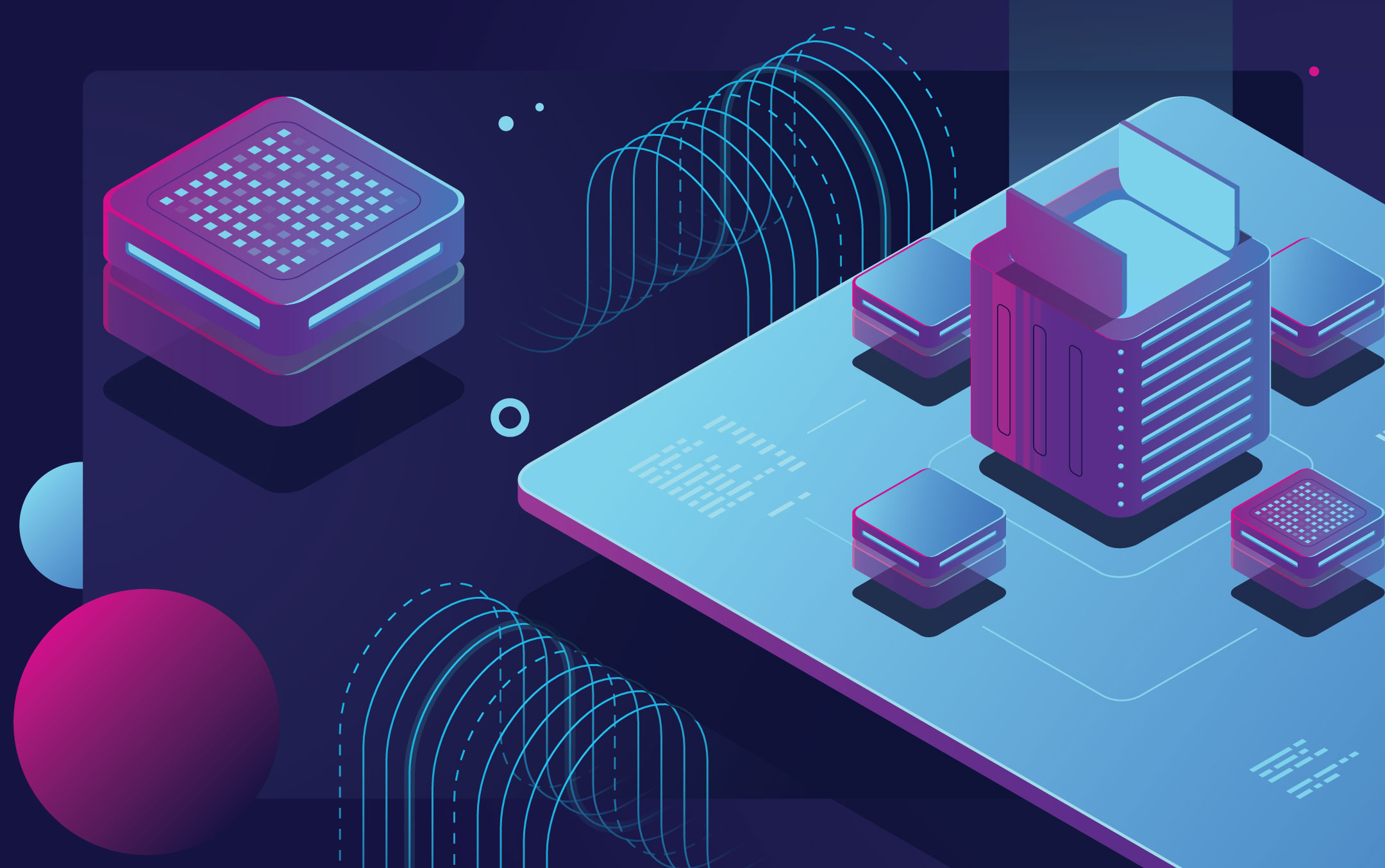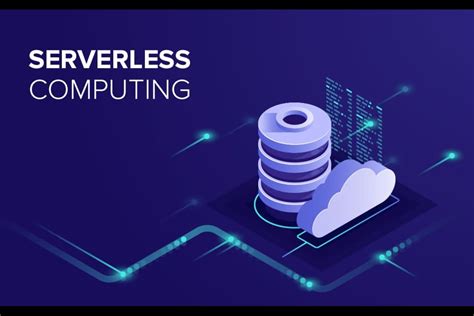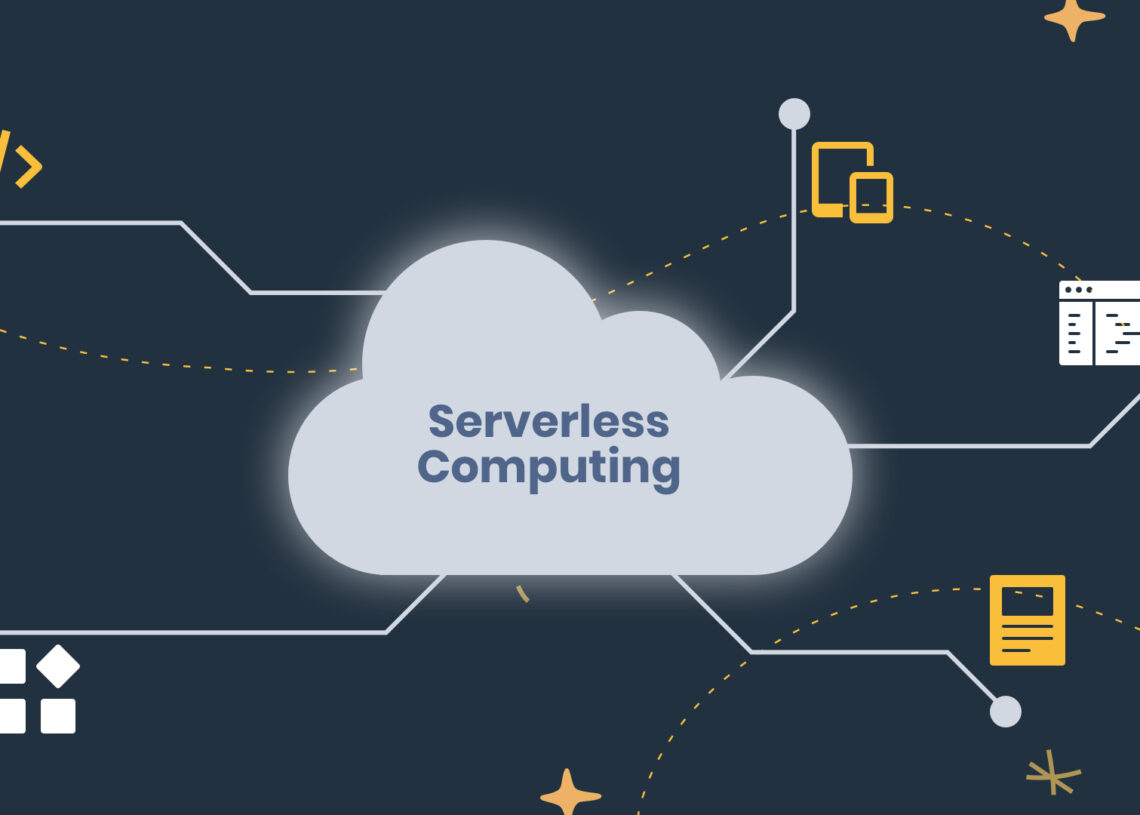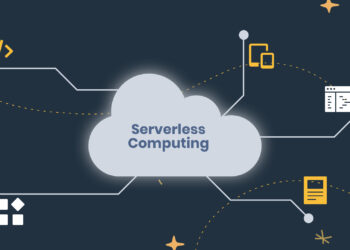In the rapidly evolving landscape of cloud computing, a revolutionary paradigm is gaining unprecedented momentum: serverless computing. For decades, developers and organizations grappled with the complexities of managing servers – provisioning, scaling, patching, and maintaining the underlying infrastructure required to run applications. Cloud computing initially eased this burden by offering virtual machines, but even these still required significant server management. Serverless computing, however, takes this abstraction a significant step further. It allows developers to write and deploy code without worrying about the servers or infrastructure at all.
The cloud provider dynamically manages all server provisioning, scaling, and maintenance. Developers simply focus on their code, which is executed in response to specific events, scaling automatically and only consuming resources when active. This “pay-per-execution” model, combined with unparalleled agility and reduced operational overhead, is accelerating the adoption of serverless architectures across industries. This article will delve into the driving forces behind the rapid growth of serverless adoption, explore its core principles and diverse applications, detail its transformative benefits, address the key challenges in its implementation, and project its profound impact on the future of software development and cloud infrastructure.
What Serverless Is and Isn’t

To understand the acceleration of serverless adoption, it’s crucial to clarify what “serverless” truly means and how it differs from traditional computing models.
- Serverless Computing (Functions as a Service – FaaS):
- Definition: A cloud execution model where the cloud provider dynamically manages the allocation and provisioning of servers. Developers write and deploy code in small, independent functions that are triggered by events.
- No Server Management: Developers are entirely abstracted from the underlying servers, operating systems, and infrastructure.
- Event-Driven: Code executes only in response to specific events (e.g., an API request, a database change, a file upload).
- Automatic Scaling: The platform automatically scales functions up or down based on demand, handling millions of requests or none.
- Pay-per-Execution: Users are only billed for the compute time and resources consumed when their code is actually running, often down to the millisecond.
- Virtual Machines (VMs) / Infrastructure as a Service (IaaS):
- Definition: Users rent virtualized servers from a cloud provider and are responsible for managing the operating system, applications, and often the server configuration.
- Server Management Required: Users provision, configure, and maintain virtual servers, including patching and scaling.
- Always Running: VMs are typically always running, incurring costs even when idle.
- Containers (e.g., Docker, Kubernetes):
- Definition: Lightweight, portable, and self-contained software packages that include an application and all its dependencies, sharing the host OS kernel.
- Some Server Management: While containers abstract the OS, users still manage the underlying container orchestration platform and the servers it runs on.
- Continuous Operation: Containers are typically designed to run continuously within a host environment.
The Driving Forces Behind Accelerated Serverless Adoption
Several compelling factors are propelling the rapid uptake of serverless architectures across the technology landscape.
Reduced Operational Overhead
- No Server Management: Eliminates the need for provisioning, scaling, patching, and maintaining servers, freeing up development and operations teams. This is a significant cost and time saver.
- Automated Infrastructure: The cloud provider handles all underlying infrastructure concerns, allowing developers to focus purely on application logic.
Cost Efficiency (Pay-per-Execution)
- Granular Billing: Users only pay for the exact compute time and resources consumed by their functions, often measured in milliseconds. This can lead to substantial cost savings, especially for applications with fluctuating or infrequent usage.
- Zero Cost for Idle: Unlike traditional servers or VMs, serverless functions incur no cost when they are not actively processing requests.
Automatic Scaling and High Availability
- Elasticity: Serverless functions can automatically scale from zero invocations to millions per second, effortlessly handling sudden spikes in demand without manual intervention.
- Built-in Resilience: Cloud providers typically build high availability and fault tolerance directly into their serverless platforms, reducing the burden on developers to architect for resilience.
Faster Time-to-Market
- Developer Focus: Developers can concentrate solely on writing business logic, unburdened by infrastructure concerns, which accelerates the development and deployment cycles.
- Rapid Prototyping: The ease of deployment makes serverless ideal for quickly prototyping new features or applications.
Increased Developer Agility and Productivity
- Simpler Deployment: Deploying and updating serverless functions is often a streamlined process, allowing for continuous integration and continuous deployment (CI/CD) pipelines.
- Focus on Value: Developers spend less time on undifferentiated heavy lifting and more time building features that deliver business value.
Growth of Event-Driven Architectures
- Natural Fit: Serverless is inherently event-driven, aligning perfectly with modern application design principles where services react to specific events (e.g., a new user registration, a file upload, a message in a queue).
Ecosystem Maturity
- Rich Integrations: Major cloud providers (AWS Lambda, Azure Functions, Google Cloud Functions) offer extensive integrations with their other services (databases, messaging queues, storage), simplifying application development.
- Tooling Support: The ecosystem of development tools, monitoring solutions, and frameworks for serverless is maturing rapidly.
Ideal Use Cases for Serverless Architectures
Serverless is particularly well-suited for a variety of specific application types and workloads, leveraging its inherent strengths.
- Web Applications and APIs:
- Backend for Frontend (BFF): Building lightweight APIs that serve web and mobile applications, scaling automatically with user demand.
- Static Site Hosting: Augmenting static websites with dynamic functionality (e.g., contact forms, authentication) without needing a full server.
- Data Processing and Transformations:
- Real-time Data Pipelines: Processing streaming data from IoT devices, logs, or user activity in real time.
- Image/Video Processing: Automatically resizing images, converting video formats, or watermarking files as they are uploaded to storage.
- ETL (Extract, Transform, Load) Workflows: Triggering functions to transform data as it arrives in a data lake or database before loading it for analysis.
- Chatbots and Virtual Assistants:
- Backend Logic: Powering the conversational logic and integrations for chatbots, scaling to handle varying user loads.
- Natural Language Processing (NLP): Performing NLP tasks on user input.
- IoT Backend:
- Device Data Ingestion: Ingesting and processing data from millions of connected IoT devices, scaling massively to handle the influx.
- Command and Control: Sending commands back to devices based on processed data or user input.
- Mobile Backends:
- API Endpoints: Providing scalable and cost-effective backend APIs for mobile applications.
- User Authentication/Authorization: Managing user identity and access control for mobile app users.
- Automation and Workflow Orchestration:
- Scheduled Tasks: Running cron jobs or scheduled tasks (e.g., daily reports, database backups) without needing to manage a server.
- Workflow Steps: Orchestrating complex multi-step workflows where each step is a serverless function, triggered sequentially or in parallel.
- Event-Driven Applications:
- User Registration: Triggering functions to send welcome emails, provision resources, or update databases upon new user sign-ups.
- E-commerce Event Handling: Processing order confirmations, updating inventory, or sending shipping notifications.
- Machine Learning (ML) Inference:
- On-Demand Model Serving: Deploying trained ML models as serverless functions to perform predictions or classifications on demand, scaling efficiently for varying inference loads.
The Benefits of Serverless for Organizations

The shift to serverless brings forth a host of powerful advantages that can significantly impact an organization’s bottom line and strategic capabilities.
- Reduced Total Cost of Ownership (TCO): Eliminating server management, paying only for execution, and optimizing resource utilization leads to substantial long-term cost savings compared to traditional infrastructure models.
- Unprecedented Agility and Speed: Developers can deploy new features and applications much faster, enabling rapid iteration and quicker responses to market demands, accelerating innovation.
- Massive Scalability without Effort: Applications can automatically handle extreme variations in traffic and load, from zero to millions of requests, without any manual intervention, ensuring consistent performance.
- Higher Developer Productivity: By abstracting infrastructure concerns, developers are freed to focus purely on writing business logic, leading to more efficient coding and less time spent on operational tasks.
- Built-in High Availability and Fault Tolerance: Cloud providers build resilience into their serverless platforms, reducing the need for organizations to design and implement complex disaster recovery and high availability solutions.
- Focus on Business Value: IT teams can shift from managing infrastructure to developing innovative applications and features that directly contribute to the organization’s core business objectives.
- Reduced Environmental Footprint: By optimizing resource utilization and sharing underlying infrastructure across many tenants, serverless computing can contribute to a more energy-efficient and sustainable IT environment (part of “green computing”).
- Simplified DevOps: The ease of deployment and inherent scalability of serverless functions can streamline CI/CD pipelines, making DevOps practices more efficient and effective.
- Enhanced Security (Managed Platform): Cloud providers typically handle the security of the underlying serverless platform, including patching and hardening, reducing the security burden on organizations. However, developers remain responsible for securing their code.
Challenges and Considerations in Serverless Adoption
While offering numerous benefits, serverless computing introduces new complexities and requires careful planning for successful implementation.
- Vendor Lock-in: Serverless platforms are often proprietary to a specific cloud provider (e.g., AWS Lambda, Azure Functions). Migrating functions and their integrations between providers can be challenging.
- Cold Starts: When a function hasn’t been invoked for a while, it may experience a “cold start,” where the platform needs to initialize the execution environment, leading to a slight delay in response time. This can be a concern for latency-sensitive applications.
- Debugging and Monitoring Complexity: Distributed serverless architectures can make debugging challenging as multiple functions interact. Tracing requests across different services and monitoring individual function performance requires specialized tools.
- Statelessness: Serverless functions are typically stateless, meaning they don’t retain data between invocations. This requires careful design to use external storage (databases, object storage) for managing state, which adds complexity.
- Resource Limits: Functions often have memory, CPU, and execution time limits. This can be a constraint for long-running or highly compute-intensive tasks, requiring breaking them down into smaller functions.
- API Gateway and Event Source Management: While serverless functions themselves are simple, managing the numerous event sources and API gateways that trigger them can become complex in large applications.
- Security Concerns (Shared Responsibility): While the platform is secured by the provider, developers are still responsible for securing their code, managing access controls (IAM), and ensuring data privacy within their functions. Misconfigurations can lead to vulnerabilities.
- Local Development and Testing: Replicating a full serverless environment locally for development and testing can be challenging, often requiring specialized frameworks or cloud emulation tools.
- Cost Optimization (Unexpected Surges): While usually cost-effective, applications with extremely high and unpredictable invocation rates or long execution times can sometimes incur higher-than-expected costs if not carefully managed.
- Observability: Gaining deep insights into the performance, errors, and behavior of distributed serverless applications requires robust logging, tracing, and monitoring strategies that differ from traditional monolithic applications.
The Future of Serverless as the Backbone
The trajectory of serverless adoption indicates its increasing prominence, becoming a fundamental building block for future application development.
- Ubiquitous Event-Driven Architectures: Serverless will solidify event-driven design as a dominant architectural pattern, enabling highly responsive and scalable applications that react intelligently to real-time events.
- Converged Compute Models: The lines between serverless, containers, and even traditional VMs will continue to blur, with platforms offering more flexible ways to deploy and manage workloads based on the best fit for specific requirements.
- Enhanced Tooling and Developer Experience: The serverless ecosystem will continue to mature, providing more sophisticated development tools, debugging capabilities, and local emulation environments that simplify the developer workflow.
- Serverless for Enterprise Workloads: Beyond individual functions, entire enterprise applications will be built predominantly on serverless platforms, leveraging their scalability and cost efficiency for mission-critical systems.
- AI/ML Integration: Serverless functions will become a primary deployment target for AI/ML inference, allowing organizations to easily scale and serve their trained models on demand.
- Edge Serverless: The expansion of serverless capabilities to the edge of the network, enabling ultra-low-latency processing for IoT devices, smart cities, and enhanced user experiences.
- Increased Focus on Observability: As serverless architectures become more complex, advanced observability tools (distributed tracing, intelligent logging, AI-powered monitoring) will become indispensable for managing and troubleshooting.
- Multi-Cloud Serverless Strategies: While vendor lock-in remains a concern, open-source frameworks and standardized APIs may emerge to facilitate multi-cloud serverless deployments, offering greater flexibility.
- Sustainable Computing: Serverless’s inherent efficiency in resource utilization will contribute significantly to green computing initiatives, as cloud providers can optimize shared infrastructure to a greater extent.
Conclusion
The acceleration of serverless adoption is not merely a technological trend; it represents a fundamental shift in how applications are conceived, developed, and deployed. By abstracting away the complexities of server management, serverless computing empowers developers to focus on innovation, deliver features faster, and scale applications effortlessly to meet global demand. While challenges related to debugging, vendor lock-in, and statelessness require careful consideration, the transformative benefits in terms of cost efficiency, agility, and productivity are too compelling to ignore.
As the cloud ecosystem continues to mature and tooling becomes more sophisticated, serverless will increasingly become the default choice for a vast array of workloads, driving a new era of event-driven, highly scalable, and cost-optimized cloud development. The future of computing is becoming increasingly serverless, promising unparalleled agility and exponential growth for organizations willing to embrace this powerful paradigm.
















